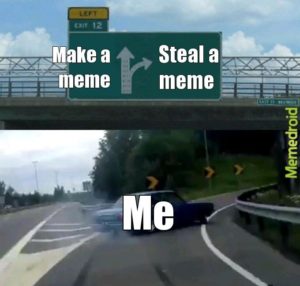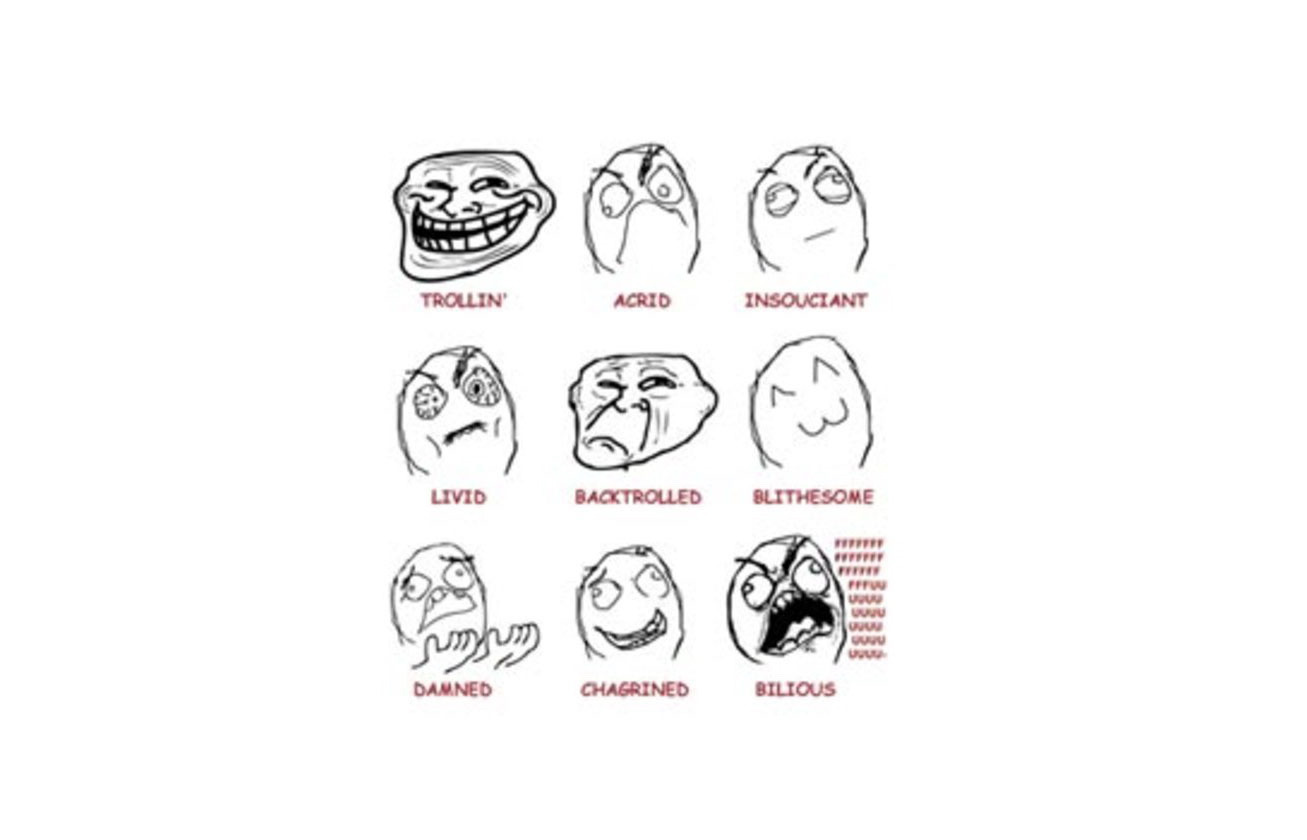C’mon, you’ve seen these guys before: these are rage comics. These memes and reaction images became popular in the late 2000s and early 10s. Courtesy of knowyourmeme.com
By James Bennett III
“It’s time to stop. It’s time to stop. Okay? No more. Where the F**k are your parents? Who are your parents? I’m gonna call child protective services. It’s time to stop.”
These words, spoken in 2015 by the infamous YouTube personality Filthy Frank, still ring as true as the day they were first said.
It is time to stop running memes into the ground.
For those lucky few who are blissfully unaware of the term “meme,” allow me to give a brief explanation.
The term, which is believed to have originated from biologist Richard Dawkins’ book “The Selfish Gene,” refers to a cultural idea that has been passed along through imitation.
Conveniently, the term also bears a resemblance to the French word “même,” which translates to “same” in English.
Regardless of linguistics, most people understand the term as a joke which has some degree of auditory, physical, written or visual repetition.
Surely each of us have been subjected to at least a few memes here and there.
Juvenile penis sketches date back as far as wall carvings in Pompeii, “Kilroy was here” could be found accompanied by a sketch of a bald man poking his nose over a wall throughout World War II, and countless T-shirts depicting “rage comics” were sold in malls across the nation around the early 2010s.
Those God-awful T-shirts bring me to my first point: Businesses have been capitalizing on memes for too long.
Fast food chain Wendy’s ran an advertisement that showed “the memer” enjoying his Jalapeno Fresco Spicy Chicken sandwich “like a boss.”
Gucci referenced the “Me vs. the guy she says I shouldn’t worry about” two-panel in an ad promoting one of its Le Marché des Merveilles watches, and just the other day I saw a billboard promoting discount car stereos with the upside down OK gesture printed in the corner (had to get my neck for that one, if you know you know).
To make things clear, I don’t have a problem with brands using culture to attract a younger wave of customers. Some would argue that Nike did just that with their Colin Kaepernick campaign, and I considered that ad to be tasteful.
My problem is that the businesses who use memes as a marketing strategy are rarely contributing to the culture.
Some people expend a good deal of their time, energy and resources to produce quality memes because the culture is important to them. I don’t believe the same can be said for a lot of these companies.
Sure, Wendy’s tried to make things right with their “We Beefin?” mixtape, but the majority of cringe-worthy meme campaigns are intended to make a quick buck.
There were rumors that University of California, Berkeley would be starting a “meme studies department,” so it’s obviously making someone money.
This exploitation of the culture contributes to the “normification” of memes.
Normification diminishes the value of memes, creating a stagnant cesspool of meaningless repetition that drowns any meme’s potential to be entertaining or culturally relevant.
Of course, capitalism isn’t the only thing running memes into the ground; there are plenty of uninspired meme templates and social media accounts contributing to the failing meme economy.
The “bröther, give me lööps” cat is essentially the same meme as “can I has cheezburger,” and how many “X is better than Y” templates will we suffer before people realize that even the meta memes critiquing them aren’t original anymore.

We’ve had Drakeposting, a distracted boyfriend, a car drifting off the interstate, Krusty Krab vs. Chum Bucket and “this is brilliant, but I like this.”
Sure, they manage to stay relevant for a short period of time while they review trendy subjects, but their oversaturation and simplicity kills the meme before it has an opportunity to express something worthwhile.
Next, you’ve got content creators who shovel opinions that appeal to the majority for more likes and reposters who blatantly plagiarize their work.
I don’t mean to say that having a popular opinion is wrong, I just think that hopping on the bandwagon in search of approval isn’t as culturally useful as a meme that inspires dialogue or pokes fun at the absurd experiences of human life.
Memes are important to our culture; they provide a form of escapism that allows users to discuss the world around them.
I implore readers to consider how their choices in meme production and promotion reflect their values.
Are we a society that chooses likeability over criticism and plagiarism over creativity, or do we want to improve the lives of others by fighting the mundane and chuckling at uncomfortable circumstances?
In the age of alternative facts, reality television and nuclear bombs, I could sure use a dank meme every now and then.



